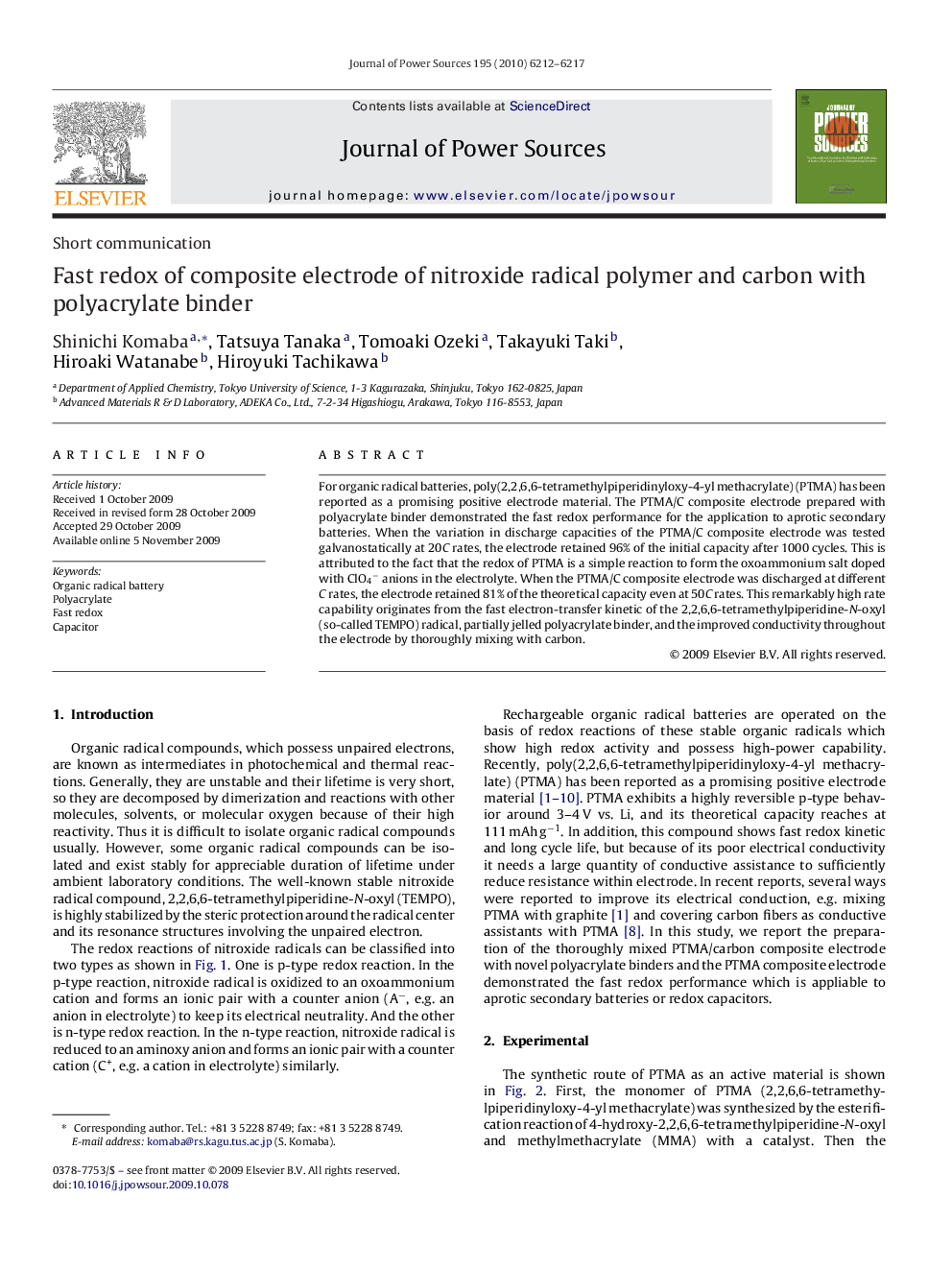| Article ID | Journal | Published Year | Pages | File Type |
|---|---|---|---|---|
| 1289031 | Journal of Power Sources | 2010 | 6 Pages |
For organic radical batteries, poly(2,2,6,6-tetramethylpiperidinyloxy-4-yl methacrylate) (PTMA) has been reported as a promising positive electrode material. The PTMA/C composite electrode prepared with polyacrylate binder demonstrated the fast redox performance for the application to aprotic secondary batteries. When the variation in discharge capacities of the PTMA/C composite electrode was tested galvanostatically at 20C rates, the electrode retained 96% of the initial capacity after 1000 cycles. This is attributed to the fact that the redox of PTMA is a simple reaction to form the oxoammonium salt doped with ClO4− anions in the electrolyte. When the PTMA/C composite electrode was discharged at different C rates, the electrode retained 81% of the theoretical capacity even at 50C rates. This remarkably high rate capability originates from the fast electron-transfer kinetic of the 2,2,6,6-tetramethylpiperidine-N-oxyl (so-called TEMPO) radical, partially jelled polyacrylate binder, and the improved conductivity throughout the electrode by thoroughly mixing with carbon.
